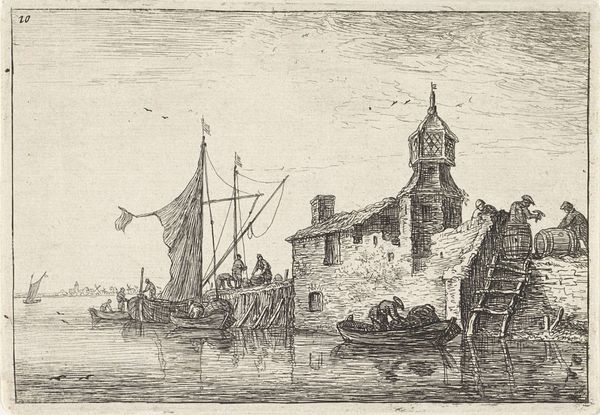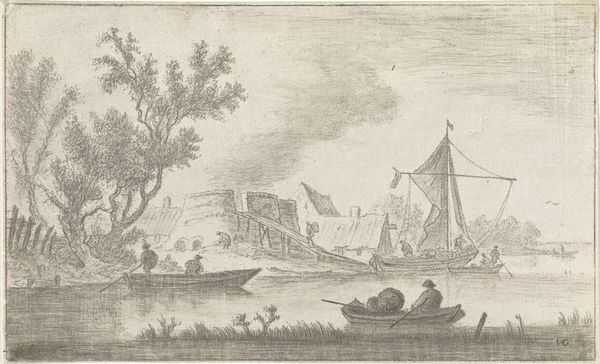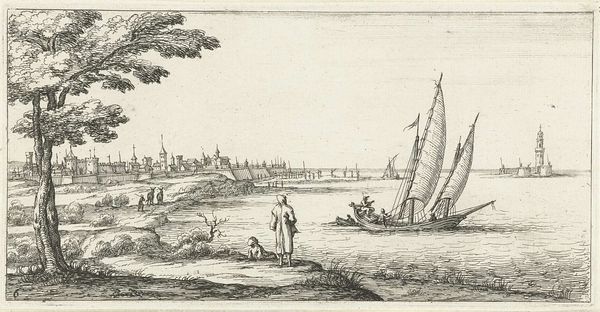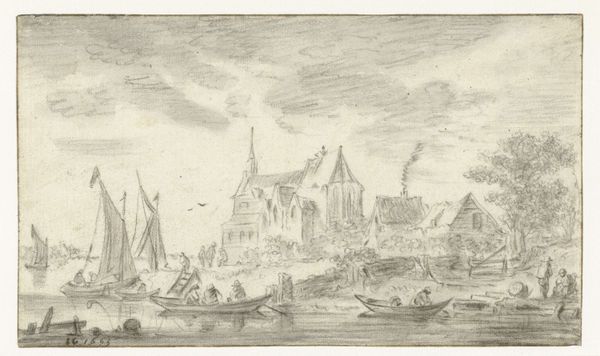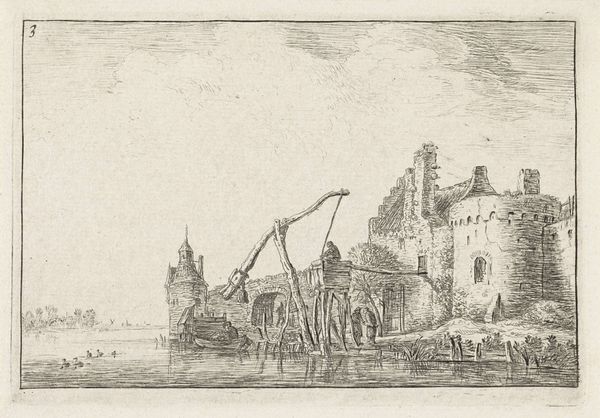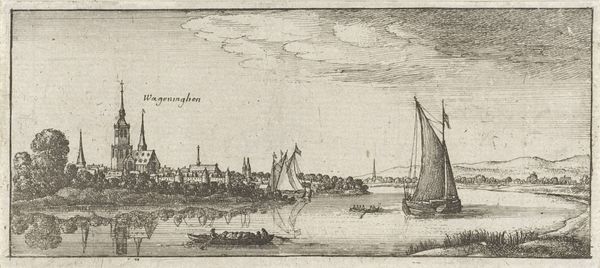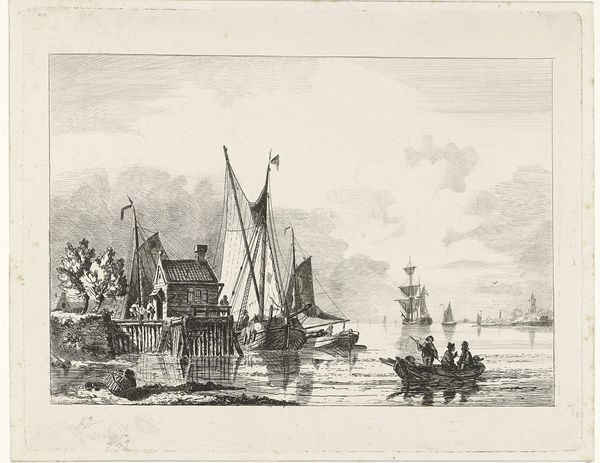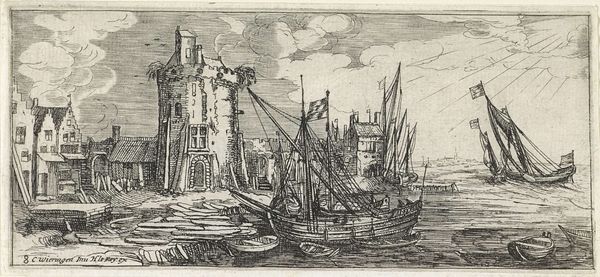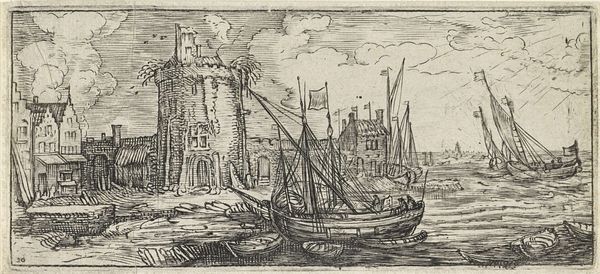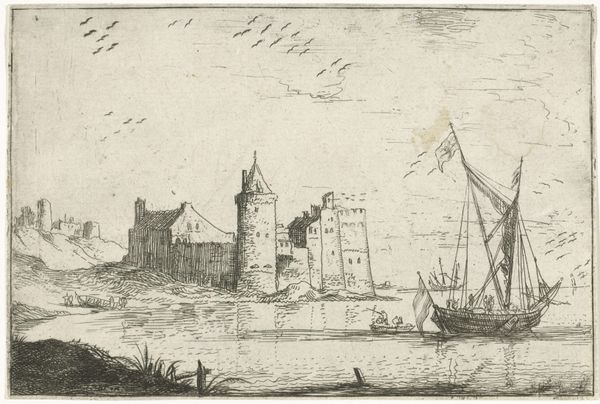
print, engraving
#
dutch-golden-age
# print
#
landscape
#
line
#
cityscape
#
engraving
#
realism
Dimensions: height 139 mm, width 190 mm
Copyright: Rijks Museum: Open Domain
Curator: Here we have Claes Jansz. Visscher's "Havengezicht," created in 1613. It's a captivating engraving now held in the Rijksmuseum. The artist captured a bustling harbor scene with incredible detail. What are your initial impressions? Editor: The scene is vibrant but the engraving style makes it look stark and precise. It feels very "made," if that makes sense, consciously crafted with careful marks. It draws my attention to the tools and labor that went into its production as much as it does to the harbor it depicts. Curator: I agree. The precision is striking. The use of line speaks volumes about the Dutch Golden Age's emphasis on clarity and order. And this order, through symbols, hints at the values held in Dutch society: prosperity, commerce, even a national identity beginning to take form on the water. The boats, the buildings—each represents an element contributing to the burgeoning Dutch state. Editor: Right, those details speak to me of the mechanics of daily life. Looking closely, you see the materiality of this society represented, from the timber of the ships to the brick and tile construction of the buildings along the shore, these structures literally form and shape daily life. This piece allows us to consider the very material foundations upon which Dutch society was building itself at the time. Curator: Absolutely. Notice also how the church tower stands tall among the harbor buildings, implying that spirituality is still relevant in this busy commercial world. The city represents cultural symbols, that even become interwoven and enmeshed in this image. Editor: But it is the production of the print itself that captures my interest. Visscher had to possess a profound understanding of the qualities of metal and the controlled application of acid. The black ink itself signals trade. The raw materials employed, like linen for paper production, also are part of its social commentary. Curator: I appreciate how you point to the broader material network, which has a cultural connection. When I view it through a more symbolic lens, the print captures a moment of optimistic expansion, of reaching out across the water to new markets and new possibilities. Editor: Maybe. Or, is it a more objective inventory? To me, Visscher methodically represents the literal nuts and bolts—and the ropes and sails—that propelled the Dutch Republic. In doing so, the picture creates something more powerful as well, documenting an early manifestation of a capitalist world being forged in this very era. Curator: I am moved to contemplate what elements of our civilization, rendered meticulously like this, might signify about our ambitions and hopes for future audiences. Editor: Exactly. By closely investigating these tangible markers and processes from Visscher’s period, we glean so much regarding what society actually prioritizes, as told not only through symbols, but through everyday tangible materiality.
Comments
No comments
Be the first to comment and join the conversation on the ultimate creative platform.


